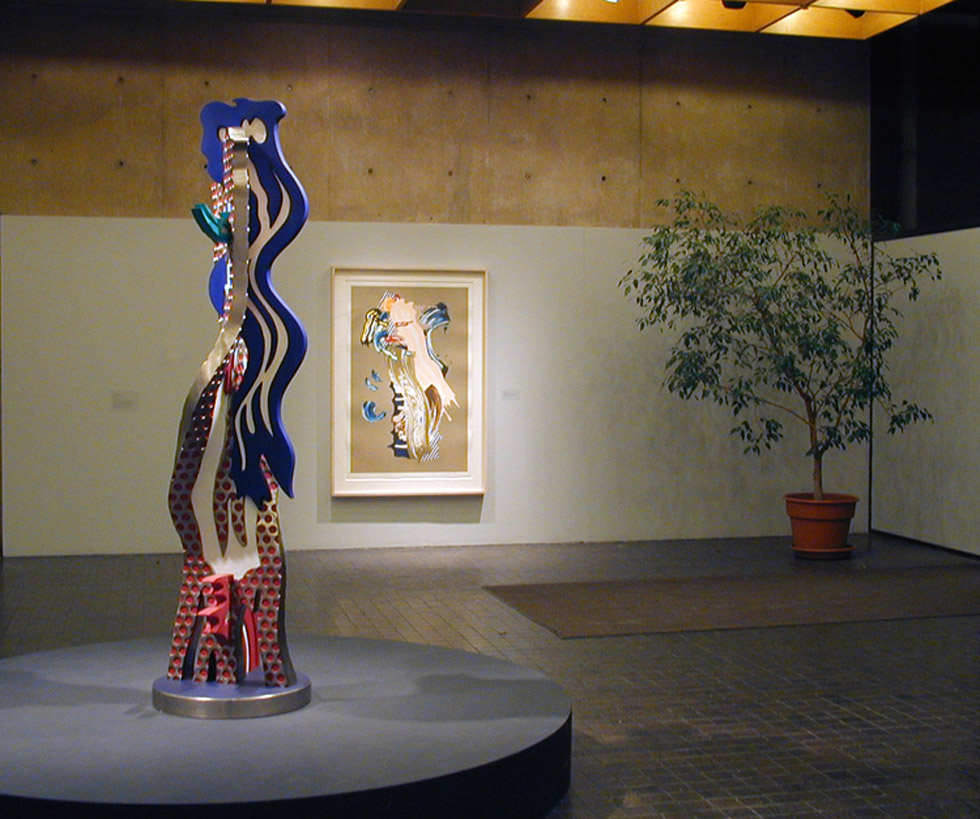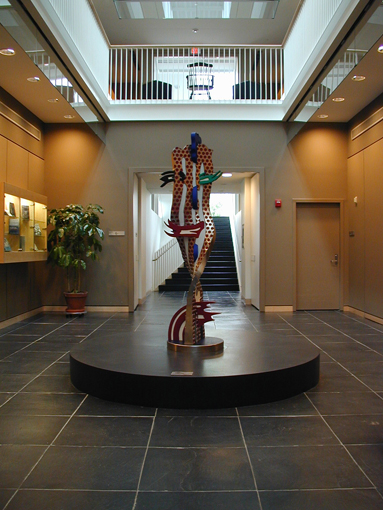
Roy Lichtenstein | Metallic Brushstroke Head (1994)
Roy Lichtenstein
Metallic Brushstroke Head, 1994
- Nickel-plated bronze painted with enamel
- Edition 5/6
- 24" x 24" x 83"
- Private Collection, New York
- At Brown: 2002 - 2004
- Installed in the Watson Institute of International Study lobby

Roy Lichtenstein’s Metallic Brushstroke Head was briefly displayed in the lobby of the List Art Building—where it stood as the centerpiece for an exhibit of his prints—before it was installed at length in the Watson Institute of International Study lobby. Lichtenstein’s signature comic-book patterns and brush strokes together make up the facial features on what appears to be a moving body. From different angles, one can see all the various features—hair, face, lips—and the planes on which they exist. Metallic Brushstroke Head is one of two works from Lichtenstein’s brushstroke oeuvre that have been on view at Brown. His series of brushstroke sculptures referenced an earlier series of paintings by the same name that he made in the 1960s. Together, they represent a significant part of Lichtenstein’s repertoire. Lichtenstein’s work was central in the development of Pop Art, a movement informed and inspired by images that circulated in mass culture. The style, which came about in the mid twentieth-century, used the size, shape, color, and techniques of communication commonly deployed in advertisements and other popular visual material at the time. Pop Art, in part, situated itself in opposition to the more impulsive, painterly drive of Abstract Expressionism.
Lichtenstein’s marks reflect a great deal of restraint and precision. By taking the quintessential mark of the brushstroke and removing it from the physical and rhetorical space of Abstract Expressionism, and painting in general, he turns it into an icon, while also commenting on the different ways we think about what makes appropriate subjects for art. Beyond reproducing quotidian style of the day, Lichtenstein’s work, especially his brushstrokes series, engages a critical and informed commentary on art making.